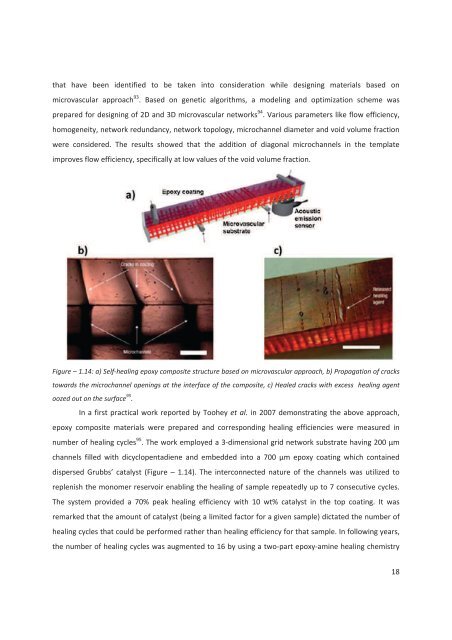4(%3)3 - Ecole nationale supérieure de chimie de Montpellier
4(%3)3 - Ecole nationale supérieure de chimie de Montpellier
4(%3)3 - Ecole nationale supérieure de chimie de Montpellier
You also want an ePaper? Increase the reach of your titles
YUMPU automatically turns print PDFs into web optimized ePapers that Google loves.
that have been i<strong>de</strong>ntified to be taken into consi<strong>de</strong>ration while <strong>de</strong>signing materials based onmicrovascular approach 93 . Based on genetic algorithms, a mo<strong>de</strong>ling and optimization scheme wasprepared for <strong>de</strong>signing of 2D and 3D microvascular networks 94 . Various parameters like flow efficiency,homogeneity, network redundancy, network topology, microchannel diameter and void volume fractionwere consi<strong>de</strong>red. The results showed that the addition of diagonal microchannels in the templateimproves flow efficiency, specifically at low values of the void volume fraction.Figure – 1.14: a) Self-healing epoxy composite structure based on microvascular approach, b) Propagation of crackstowards the microchannel openings at the interface of the composite, c) Healed cracks with excess healing agentoozed out on the surface 95 .In a first practical work reported by Toohey et al. in 2007 <strong>de</strong>monstrating the above approach,epoxy composite materials were prepared and corresponding healing efficiencies were measured innumber of healing cycles 95 . The work employed a 3-dimensional grid network substrate having 200 µmchannels filled with dicyclopentadiene and embed<strong>de</strong>d into a 700 µm epoxy coating which containeddispersed Grubbs’ catalyst (Figure – 1.14). The interconnected nature of the channels was utilized toreplenish the monomer reservoir enabling the healing of sample repeatedly up to 7 consecutive cycles.The system provi<strong>de</strong>d a 70% peak healing efficiency with 10 wt% catalyst in the top coating. It wasremarked that the amount of catalyst (being a limited factor for a given sample) dictated the number ofhealing cycles that could be performed rather than healing efficiency for that sample. In following years,the number of healing cycles was augmented to 16 by using a two-part epoxy-amine healing chemistry18











